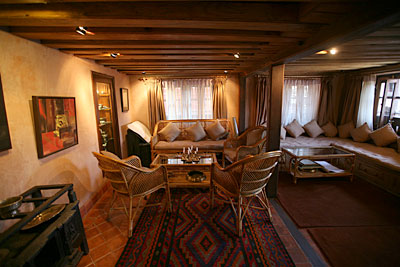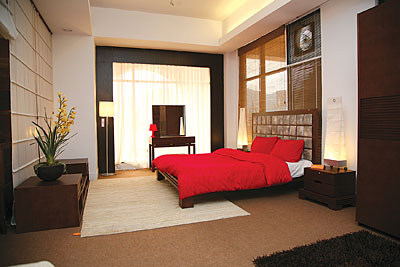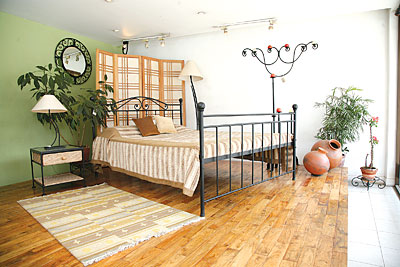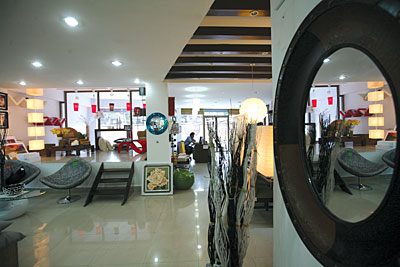 ALL PICS: KIRAN PANDAY |
Ten years ago, interior designing in Nepal meant going to the local carpenter for your furniture and then picking out a carpet and accessories at a store of your choice. Professional interior designers were rare; the closest you might get would be tips from your architect.
But interior designing is getting to be serious business. People are concerned not just about how their house or office looks from the outside but also about what the interior environment is like. "The exposure they get from travelling and the media have broadened their awareness of the need for professional interior designing," says Shivendra Patrabansh, architect and interior designer. He adds that although earlier, professional help was largely sought for offices and commercial spaces, more Nepalis are now contacting interior designers to do their homes.
The boom in the construction industry of apartment blocks and housing colonies has also fuelled the demand for interior designing. The personalisation and optimum use of a space made possible by interior designing becomes crucial when one lives in an apartment or house that may be near-identical to that of the neighbours. It's still a client-driven market, but with people opening up to new styles and ideas, designers have more freedom to be creative. "Clients have their specifications but they let me plan out the interiors and design accordingly," says Rishi Saraf, an interior designer and co-owner of Casa, a home accessories store.
 |
Older people may still prefer classical 'darbar style' interiors, but new home owners often seek to give their spaces a contemporary feel. "It depends on what image the client wants to project, the purpose of the space and also the budget they are working with," says Bipin Mishra of Karuna Interiors. "People are willing to spend now."
The interest in interiors has been complemented by the increase in the number of furniture and home accessories stores. "People's tastes have definitely matured in terms of the look they prefer for their spaces," says Sunaina Saraf, co-owner of Casa. "Rather than buying a haphazard collection of items, they make informed choices." In addition to locally produced products, stores here showcase home accessories imported from Thailand, China, Malaysia, India and further afield.
Kunal Lama of Mitra Caf�, who has designed his own restaurants and is involved in the renovation of Hotel de l'Annapurna, explains, "One doesn't have to adopt a style and take it to the extreme. Moderation works well and one can always use a fusion of different styles. At the end of the day, it is about how to make your space beautiful and comfortable. And if there is expert advice available to help you make it happen, then why not opt for it?"
 |
 |
 |
READ ALSO:
Grand Designs, RUBEENA MAHATO


